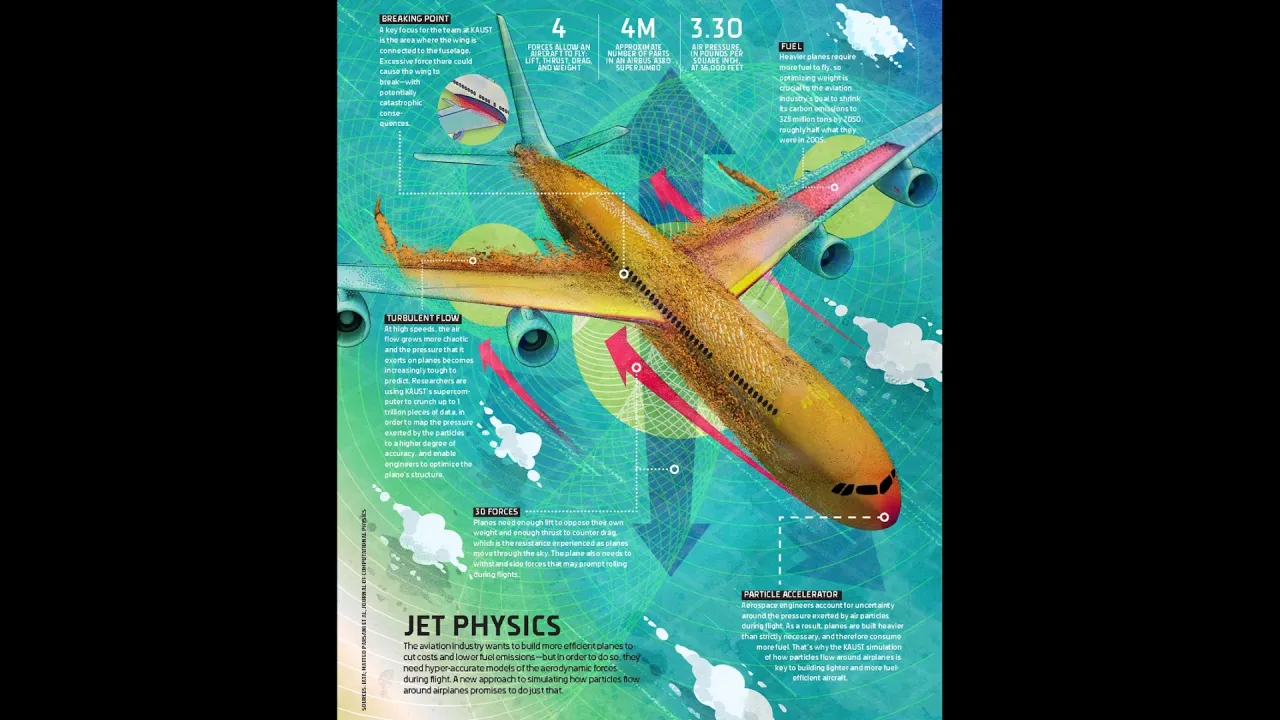
A supercomputer, billions of data points—and a plan for more efficient planes
Matteo Parsani and his team at KAUST are modeling how air particles move around objects—providing vital info for engineers designing lighter jets.
About
-Originally published on WIRED
Matteo Parsani and his team at KAUST are modeling how air particles move around objects—providing vital info for engineers designing lighter jets.
TO HEAR MATTEO Parsani describe it, he stumbled into his particular field of academia almost by accident. As assistant professor in applied math and computational science at Saudi Arabia’s KAUST, he’s used to crunching the numbers—but not just for the sake of it.
“I use a lot of mathematics, but it’s not that I love math,” Parsani explains. “It’s just a tool for me to understand things… it’s like using a calculator.”
If it’s a means to an end, it’s a powerful one. Parsani, a member of KAUST’s Extreme Computing Research Center, has been developing a way to model airflows around objects under high turbulence. It sounds like abstract research, but Parsani says the movement of these particles is “tightly connected” to the forces impacting an object. As a result, his simulations have practical applications such as making Formula 1 cars faster.
Read the full article on WIRED
